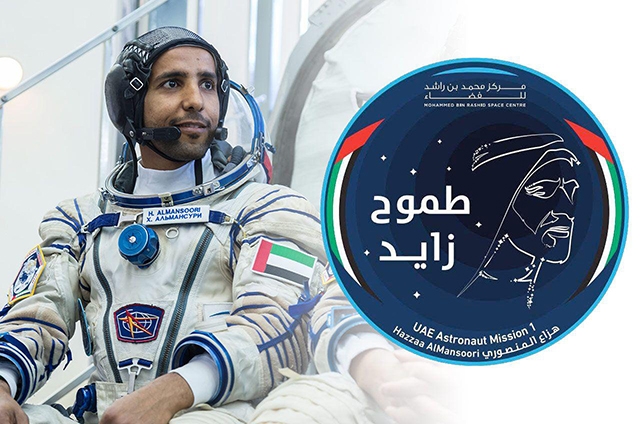First Mission to the International Space Station in Middle East Completed by UAE Citizen
The dream of the founding father and the first president of the United Arab Emirates, the late Sheikh Zayed bin Sultan Al Nahyan to connect the citizens of the UAE to cosmos, was achieved by choosing Hazza Al Mansouri as prime astronaut and Sultan Al Neyadi as back-up astronaut for the mission to the International Space Station.
Emirati astronauts spent challenging year and a half and more than 1,400 hours of tests and exercises in preparation for this mission.
The space mission of Emirati Hazza Al Mansouri, accompanied by Russian Oleg Skripochka and American NASA astronaut Jessica Meir, launched on September 25, 2019 from Kazakhstan's Baikonur Cosmodrome by the Soyuz MS15 spacecraft and after six hours successfully landed on the International Space Station.
While being on the International Space Station, the UAE astronaut conducted 16 scientific experiments in cooperation with other international space agencies: US space agency "NASA", the Russian space agency "Roscosmos", Japanese "JAXA" and European "ESA", including six experiments in the environment of microgravity, to study the impact of living in space on humans and the reaction of vital indicators of the human body.
Moreover, according to NASA, Hazza Al Mansouri completed 128 orbits around the Earth and covered 4.9 million kilometers, which equals six round trips to the moon and back.
In addition to scientific experiments, intercultural and social interaction was also a significant aspect of the mission, as Al Mansouri and crew members tasted three dishes from the UAE cuisine which was prepared according to the UAE recipes with the help of the Russian Space Laboratory Company.
The aim of the UAE astronaut was to retest experiments previously conducted by the Mohammed bin Rashid Space Centre in the United Arab Emirates and to include participation of 16 schools in order to raise the awareness and passion of new generations towards the horizons of future sciences. In this regard, the astronaut Hazza Al Mansouri had an extensive communication via video and radio means with students and shared his experience about his stay in outer space. He was also communicating daily with the Mohammed bin Rashid Center representatives to discuss his daily schedule.
After returning to the Earth on 3rd of October, Al Mansouri undertook scientific tests at the Yuri Gagarin Center in Moscow which examined zero gravity effect and consequences on the first human from the Arab region.
Landing at the Presidential Airport in Abu Dhabi, Al Mansouri and back-up astronaut Sultan Al Neyadi were personally welcomed by Crown Prince of Abu Dhabi and Deputy Supreme Commander of the Armed Forces, His Highness Sheikh Mohammed bin Zayed Al Nahyan and citizens of the UAE. The first Arab astronaut to enter the International Space Station stated at the arrival in the UAE that such a tremendous and heartwarming welcome reception by a lot of people and high-level officials indicates the importance and value of science among the UAE citizens and its leadership.
After completing the historic mission, the UAE Astronaut Program led by the Mohammed bin Rashid Space Center continues further preparing national representatives for manned space missions in order to carry out valuable scientific works to tackle challenges that in turn help to improve the human life.
By Essa Alnoaimi - the Ambassador of the United Arab Emirates in Georgia












